Kale is a cool-season vegetable that can be grown in most parts of the world, but it’s popular in the United States because of its nutritional value. In addition, it is easy to grow and relatively low maintenance, requiring only moderate soil preparation, adequate water, and good sunlight.
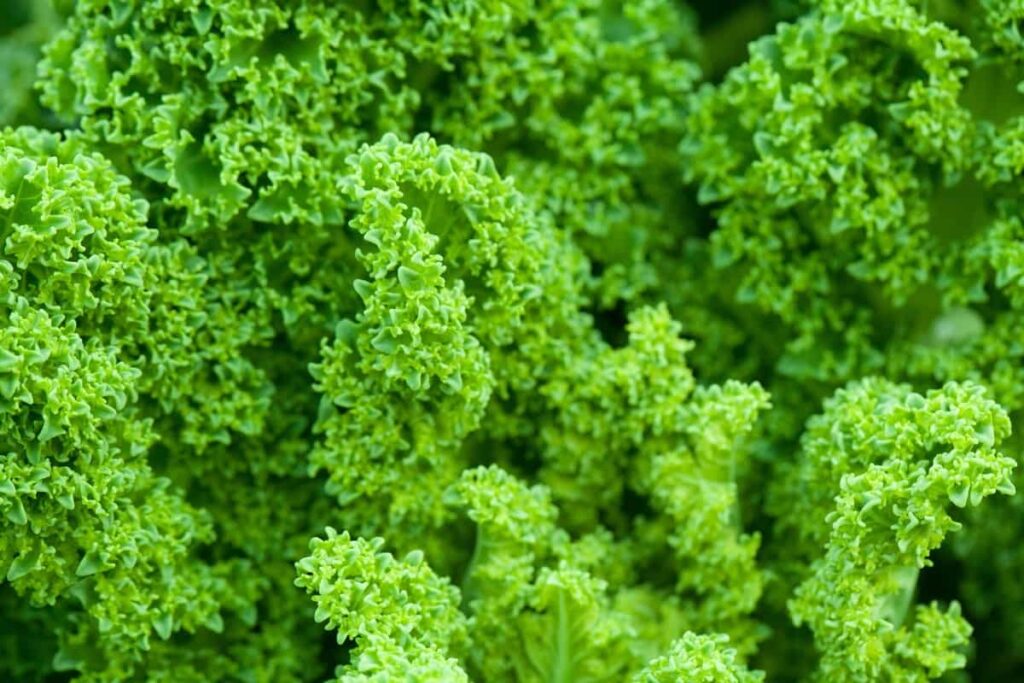
How to grow Kale in the USA
Soil requirement for growing Kale in the USA
One key to growing Kale successfully is to get good soil preparation. There are some points to remember when choosing the right soil for growing Kale. The first is the pH level, which should be between 6.5 and 7.5. Kale needs a slightly alkaline soil because it contains high levels of potassium, which helps to neutralize acids in the soil. Secondly, the fertility level of the soil is essential.
Fertile soil will have adequate amounts of nitrogen, phosphorus, and other nutrients that will help support Kale growth. Finally, the type of plant you plan to grow will also impact your choice of soil. Before starting any Kale cultivation, it is essential to understand your soil type and make necessary corrections. A good method to do this is by testing your soil’s pH levels using a soil test kit. Kale likes acidic soils, so make adjustments if necessary.
Once you have determined your soil pH level, add organic matter (compost, manure) according to the package instructions before planting your Kale. Kale likes well-drained soils and doesn’t do well in heavy clay soils, so work hard to get rid of any excess water during transplanting and keep the soil evenly moist after planting.
In case you missed it: Top 16 Steps/Ways/Methods to Boost Kale Yield: How to Increase Production and Quality
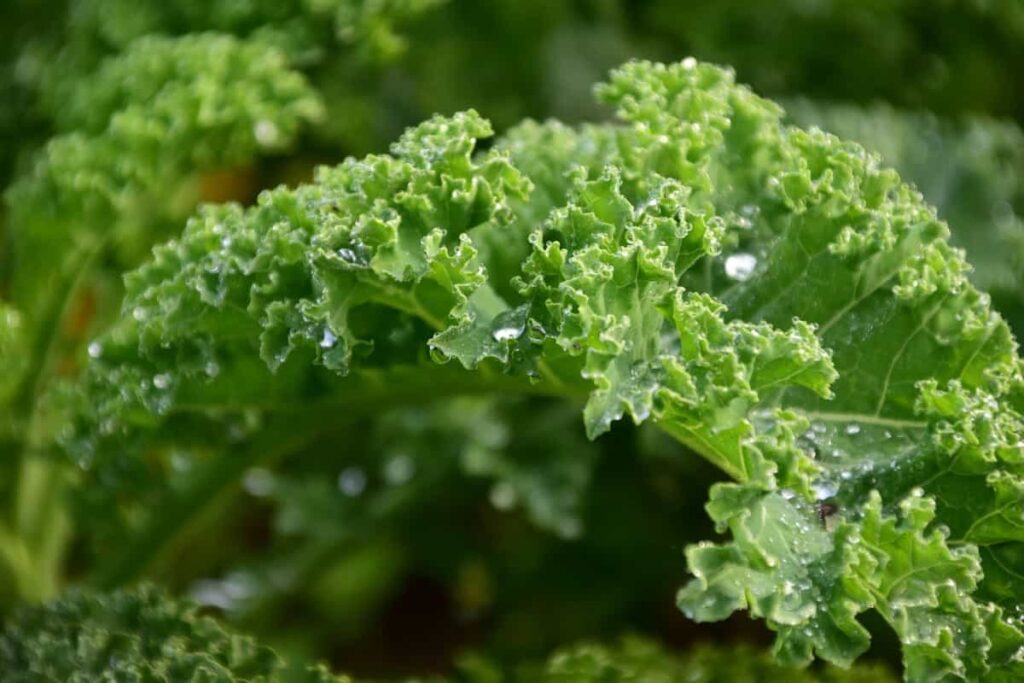
When should you start planting Kale in the USA?
- You can start planting Kale in the early spring, but it is best to produce in a cold frame or modular grow bed.
- Kale starts growing rapidly with cool weather. Plant Kale in fertile soil with plenty of organic matter. You can mulch your plants to help keep them warm and protect them from frost.
- You can also water Kale deeply but infrequently during the initial stages of growth; later on, when the plants are bigger, you can water them more frequently.
Tips for growing Kale successfully on a farm
- Kale can be grown in a wide range of climates, making it versatile for farmers across the country.
- Kale is a hardy crop that can handle a variety of soils and climate conditions.
- To grow Kale successfully on a farm, prepare the soil by adding organic matter and improving drainage.
- Propagate Kale by seed or cuttings taken from mature plants.
- Keep weeds under control by mulching the plants with hay or straw and watering them regularly throughout the growing season.
- Once you have established your Kale plants, they need to be cared for just like any other vegetable. You will want to fertilize them weekly with a balanced fertilizer and water them thoroughly when necessary.
- Mulch your Kale plants to retain moisture and help prevent weed growth. Kale can be harvested several times a year, but allow the plant to rest between harvests for best results.
- Harvest Kale leaves once they are completely green, typically in early winter or late fall, and it’s depending on the specific variety being grown.
Kale growing areas in the USA
Kale is a cruciferous vegetable plant that can be grown in most parts of the United States. Most Kale is grown domestically in California and Georgia, and a large portion of Kale production is certified organic. Kale generally grows well in U.S. Department of Agriculture (USDA) hardiness zones 4 through 9 and can tolerate some frost if grown in a protected location.
Kale growing conditions in the USA
- Kale prefers fertile, well-drained soil with good organic matter content. It is also essential to propagate Kale plants from rooted cuttings taken in late winter or early spring. Planting Kale out in the ground should be done in late April or early May, depending on the location. Kale will grow best when temperatures stay between 10°C and 23°C but can also withstand cooler temperatures.
- Water Kale frequently during dry periods, fertilize monthly with a high-nitrogen fertilizer and prune off dead leaves to encourage bushy growth.
- Choose a Kale variety known for its flavor and health benefits for the best results. Some good options include curly Kale, Icicle Green, Dinosaur Green, and Lacinato Kale.
- If you want to grow Kale indoors, start with fresh, organic soil. Once your soil is prepared, add 2-3 inches of organic compost or manure before planting your Kale seeds. Kale will grow best in climates with moderate temperatures and limited sunlight.
- To increase yield, propagate your Kale plants from stem cuttings taken in late winter/early spring. Keep the propagating area well-watered and misted to prevent fungal growth. Allow the cutting to dry out for a few days before planting it into the ground.
In case you missed it: Growing Organic Kale – Tips, Ideas, Secrets
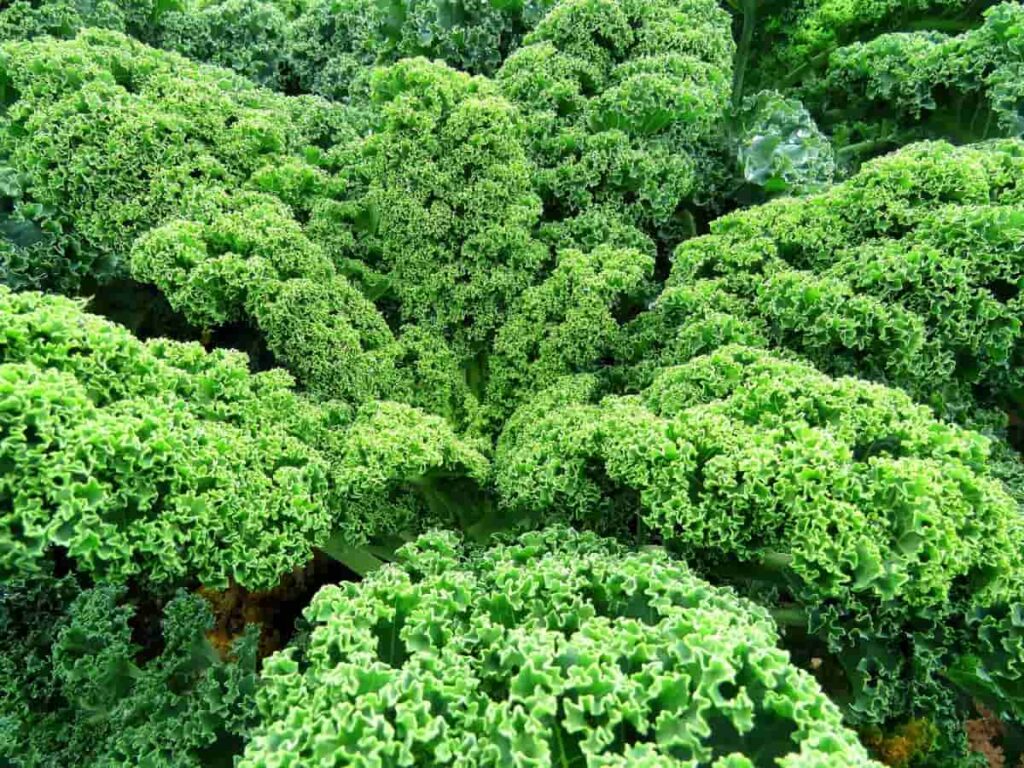
Kale varieties in the USA
Many varieties of Kale are available, including curly Kale, Chinese Kale, red Russian Kale, and Tuscan Kale.
- Cellular Kale or curly Kale: This variety has curly leaves that are very dense and firm. It is a good choice if you want hearty salad Greens that can hold up to the acidic dressing.
- Red Russian Kale: This highly nutritious Kale has dark green leaves with red veins running through them. It makes great sautés or as a bed for other vegetables in your garden. Red Russian Kale is a hearty, leafy green best suited for cooking. It has a strong flavor and is often used in soups and stews.
- Tuscan Kale: With its deep burgundy color, this type resembles Romaine lettuce in texture but carries more nutrients thanks to its high levels of vitamins C and A.
- Siberian Kale: It is similar to red Russian Kale but has a slightly sweeter taste. It is also less tender and can be tougher to cook.
- Oak-leaf Kale: It is a dark green variety that has deep purple leaves. It has a milder flavor than other Kale types, making it perfect for salads or as part of a medley with other leafy greens.
- Halloumi Kale: It is a type of Mediterranean Kale that is firmer than other types and can be used to make grilled cheese sandwiches or salads.
Choose varieties of Kale that are tolerant to your region’s hot and cold temperatures. For example, the ‘Russian Market’ variety is good for northern and southern climates. Likewise, Erinacea varieties do well in cooler climates, while ‘Formosa’ varieties work well in warmer areas. All three types of Kale can be seeded directly into the ground or be started indoors six weeks before planting out in the garden, then transplanted when large enough to handle without being pulled up by the roots.
How to grow Kale in containers?
- Kale is a cool-weather hardy perennial that can be grown in the US, Canada, and Europe. Kale is easy to grow from seed and can easily be transplanted into containers or the garden. Kale prefers cool weather and well-drained soil, but it tolerates various soils, including heavy clay.
- Sow Kale seeds into pots or trays filled with potting mix or organic matter. Plant at about 2 inches deep and cover with additional soil or compost. Water well and keep moderately moist until germination occurs, which typically takes about 7 days. Once plants have germinated, thin out the number of plants to approximately one per container and continue watering well.
- Harvest leaves when they are young (1-3 inches) by gathering them up by the stem. Older leaves can be pulled away whole, but beware of strong thorns on the edges. Container-grown Kale can be harvested every few weeks as new growth emerges.
Kale propagation methods
Kale is a cool-weather crop that can be grown successfully in most parts of the United States. The most common propagation methods are seed, root division, and cuttings taken from mature plants.
Kale growing from root division in the USA
To propagate Kale roots, make a small nick at the surface of the soil with a spade, insert a rooting hormone powder, cover with soil, and water well. Keep the planting area humid by watering regularly or using a mist system. Harvesting young Kale plants 2-3 feet high to encourage compact growth is recommended every two to three months until they reach 6-8 inches tall. Then, they can be transplanted into larger pots or gardens, where they will continue to grow vigorously.
In case you missed it: Kale Cultivation; Farming Practices; Care; Harvesting
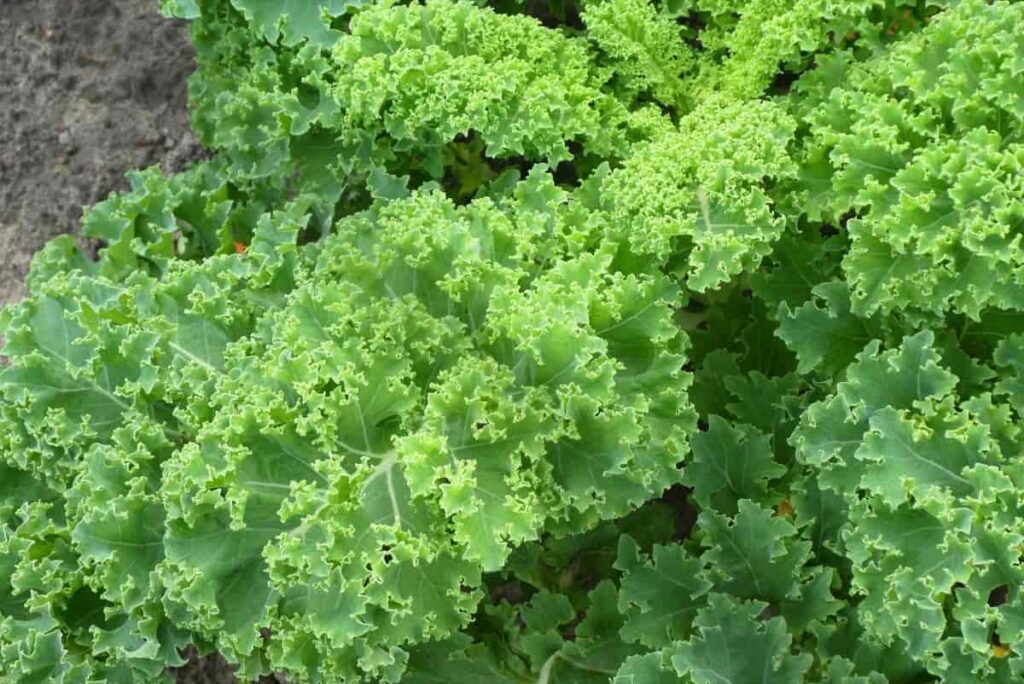
Steps to grow Kale from seed
If growing Kale from seed is your goal, there are a few essential things you’ll need to do to get started. One of the first things you’ll want to do is determine what kind of Kale you would like to grow. There are several different types of Kale available. Once you have chosen your type of Kale, it’s time to find some seeds. Kale seeds can be purchased online or at a local garden center. Once you have your Kale seeds, it’s time to begin planting them.
Kale grows best in moist soil with plenty of sunlight. To plant your Kale seeds, make a hole in the ground large enough for the seed packet and press the seed into the soil. Be sure to water the plant well after planting and fertilize it once a month with a balanced fertilizer. Kale can take up to six months to germinate, so be patient.
After germination, care should be taken not to over-water the plant as this will cause rot. When the leaves have grown a bit, and the plant has reached 6-8 inches tall, it is time to harvest your Kale. You can pick the leaves off the plant or cut them down using a sharp knife before they turn brown. Then, enjoy your fresh homegrown Kale.
Steps to grow Kale from cuttings
- Choose a healthy Kale plant. Look for evenly spaced plants with no obvious breaks or diseased areas.
- Select the desired stem, making sure to avoid any wilted or damaged leaves.
- Make a small cut at the base of the stem with a sharp knife, then use your fingers to break off the section you just cut.
- Place the cutting in water and put it in a dark place (a closet is fine). Wait until new roots form before transferring them to the soil.
- Plant the cutting in the soil where you want it to grow and water well. Kale will grow best in full sun but can tolerate partial shade and part shade.
- Harvest Kale when it reaches desired size (about 2-3 inches). It’s best to harvest young greens instead of mature ones, as they’re less bitter and more tender overall
Fertilizer requirement for growing Kale in the USA
Kale needs moderate amounts of fertilizer to grow effectively. A typical application rate for nitrogen is 18-24 pounds per acre, phosphorus 4-8 pounds per acre, and potassium 4-6 pounds per acre.
Water requirement for growing Kale
- Kale is a hearty vegetable that can handle a lot of water. Start with 1-2 gallons per week and increase as needed.
- Keep the growing soil evenly moist but not soggy.
- Avoid over-watering or letting the soil get too dry. A little dryness is okay, but if the soil gets too wet, it will cause wilting and nutrient depletion.
Kale growing problems in the USA
There are several reasons why Kale may change color during the growing season. One reason is that the plant may not be getting enough light. Kale needs bright light to grow properly, and if it isn’t getting enough light, the leaves may turn darker due to the lack of chlorophyll. Another possible cause of Kale burn is excess water content. Too much water in the plant can cause the Kale leaves to become wet and heavy.
Finally, high nitrogen levels in the soil can also contribute to darkening Kale plants due to overcooking or over-fertilization. If you notice your Kale plants are starting to turn a reddish brown, there are a few things you can do to try and prevent this from happening: make sure your Kale plants have plenty of sunlight; keep your soil dry; don’t overwater your plants, and avoid fertilizing your plants too heavily.
In case you missed it: How to Fix Iron Deficiency in Plants and Soil: Causes, Symptoms, Adding Naturally, and Chemically
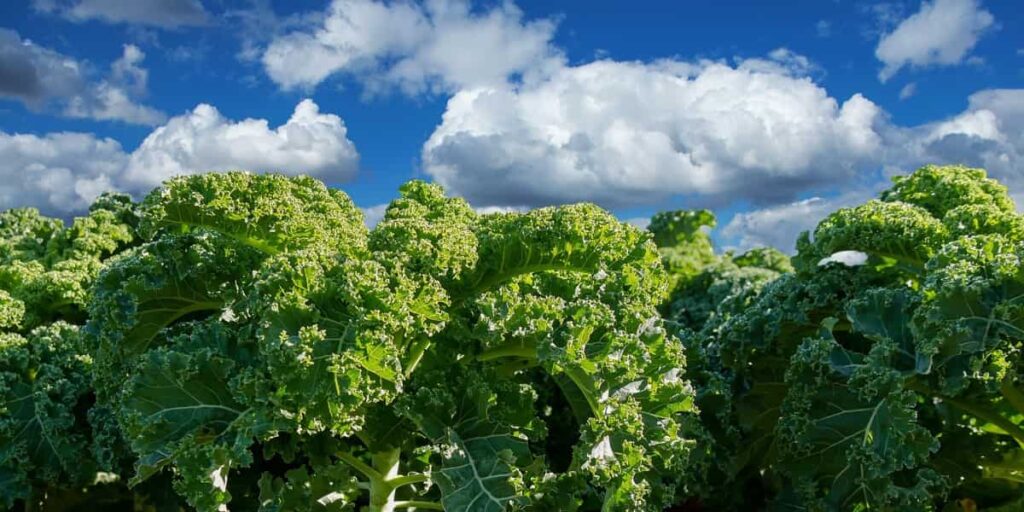
Kale pests, diseases and their control in the USA
- Some growers have reported problems with Kale growing in the USA. One issue is that Kale doesn’t do well in cold weather. Another problem is that Kale suffers from pests and diseases, which can make it difficult to grow. There have also been reports of Kalegrowing difficulties in certain parts of the country.
- One potential problem with Kale is the presence of pests such as aphids, spider mites, and flea beetles. Fortunately, many of these pests can be controlled using common garden pesticides o natural methods such as parasitic wasps or beneficial nematodes. Other problems that may arise with Kale include fungal infections (particularly downy mildew) and temperature extremes.
- Pests and diseases that can be a problem for Kale crops in the United States include Verticillium wilt, Fusarium oxysporum, wilts caused by Botrytis cinerea, leaf spot caused by Phytophthora infestans, and nematodes.
- Control methods for these pests and diseases depend on the particular case. However, some general tips include choosing resistant varieties, scouting your plants for signs of trouble, using organic practices when possible, using beneficial insects to control pests (especially Nematodes), and treating affected plants with appropriate chemicals or spray programs as needed.
When and how to harvest Kale in the USA
- Start by cutting off the bottom leaves and stem of the Kale plant. These tough leaves can be tough to chew and don’t taste as good as the tender leaves higher up on the plant. Leave about 6 inches of plant stem attached to each leaf. This will help keep the plant intact during harvest.
- Once you have harvested all the leaves from a plant, cut off any damaged or rotted ones. Leaves wilted, or brown are generally not edible and should be composted or discarded.
- Rinse Kale thoroughly in cold water before cooking or freezing it.
Commonly asked questions about growing Kale (FAQ)
Does Kale like the sun or shade?
One of the most nutritious shade-loving vegetables around, Kale thrives in just a few hours of sunlight daily.
Does Kale regrow after cutting?
When Kale is harvested properly, it works as a cut-and-come-again vegetable that quickly grows to regenerate plant leaves for multiple harvests. For Kale to grow back, harvest the oldest leaves first—those on the outside of the plant at the bottom.
Does Kale need a lot of water?
Kale likes a nice, even supply of water – about 1 to 1.5 inches per week. If the soil gets dry, give it a good watering.
In case you missed it: How to Fix Calcium Deficiency in Soil and Plants: Symptoms, Causes, Adding Naturally, and Chemically
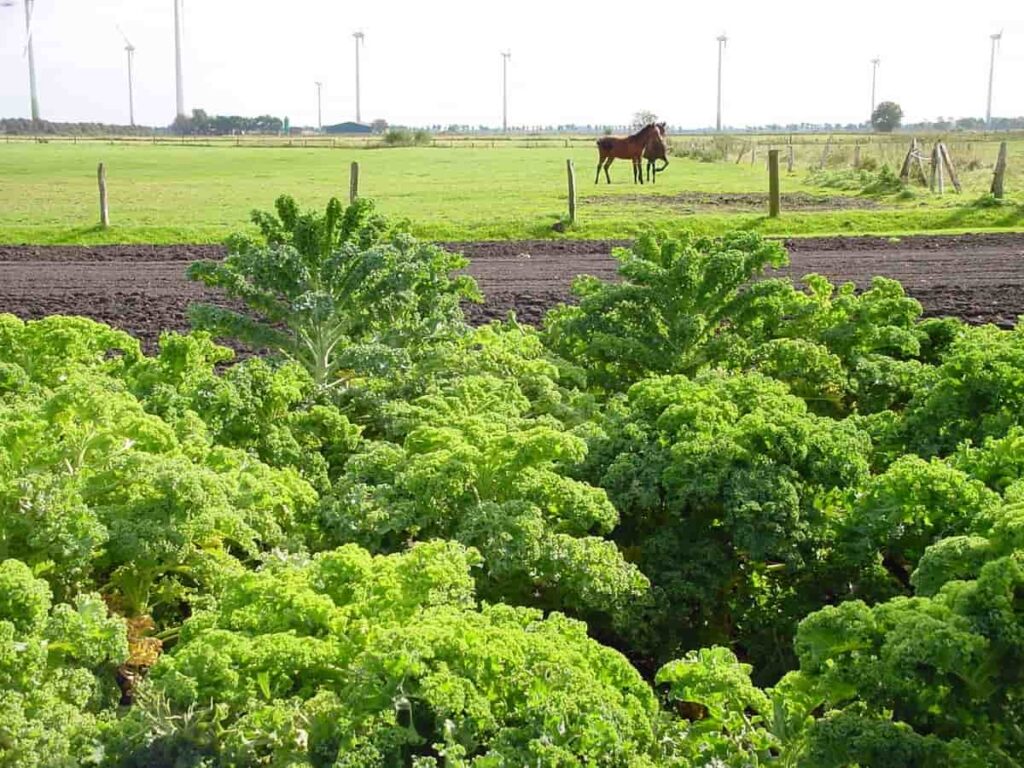
Does Kale need fertilizer?
It grows best in full sun and cool, moist soil enriched with organic compost. Before Kale planting, incorporate a legume cover crop or work in 30 pounds of compost per 100 square feet. Kale requires moderate amounts of fertilizer rich in nitrogen, phosphorus, and potassium.
Does Kale like Epsom salt?
Leafy green crops like Kale, collard greens, and spinach require the most magnesium for growth. Therefore, adding Epsom salt to the soil will benefit these plants the most.
Conclusion
Growing Kale in the United States can be a fun and rewarding gardening experience, but it requires a proper preparation. It can grow in cooler climates as well as warmer climates. It is an easy vegetable to grow and can be planted in any soil type, although it prefers well-drained soil.
- Types of Pesticides Used in Agriculture: A Beginner’s Guide
- Economical Aquaculture: A Guide to Low-Budget Fish Farming
- 15 Common Planting Errors That Can Doom Your Fruit Trees
- How to Make Houseplants Bushy: Effective Tips and Ideas
- Innovative Strategies for Boosting Coconut Pollination and Yield
- Pollination Strategies for Maximum Pumpkin Yield
- The Complete Guide to Chicken Fattening: Strategies for Maximum Growth
- Natural Solutions for Tulip Problems: 100% Effective Remedies for Leaf and Bulb-Related Issues
- Revolutionizing Citrus Preservation: Towards a Healthier, Greener Future
- Natural Solutions for Peony Leaf and Flower Problems: 100% Effective Remedies
- Maximizing Profits with Avocado Contract Farming in India: A Comprehensive Guide
- Natural Solutions for Hydrangea Problems: 100% Effective Remedies for Leaf and Flowers
- The Ultimate Guide to Choosing the Perfect Foliage Friend: Bringing Life Indoors
- From Sunlight to Sustainability: 15 Ways to Use Solar Technology in Agriculture
- The Ultimate Guide to Dong Tao Chicken: Exploring from History to Raising
- The Eco-Friendly Makeover: How to Convert Your Unused Swimming Pool into a Fish Pond
- Mastering the Art of Delaware Chicken Farming: Essentials for Healthy Backyard Flocks
- 20 Best Homemade Fertilizers for Money Plant: DIY Recipes and Application Methods
- How to Craft a Comprehensive Free-Range Chicken Farming Business Plan
- Brighten Your Flock: Raising Easter Egger Chickens for Beauty and Bounty
- How to Optimize Your Poultry Egg Farm Business Plan with These Strategies
- Subsidy for Spirulina Cultivation: How Indian Government Schemes Encouraging Spirulina Farmers
- Ultimate Guide to Raising Dominique Chickens: Breeding, Feeding, Egg-Production, and Care
- Mastering the Art of Raising Jersey Giant Chickens: Care, Feeding, and More
- Ultimate Guide to Raising Legbar Chickens: Breeding, Farming Practices, Diet, Egg-Production
- How to Raise Welsummer Chickens: A Comprehensive Guide for Beginners
- How to Protect Indoor Plants in Winter: A Comprehensive Guide
- Ultimate Guide to Grow Bag Gardening: Tips, Tricks, and Planting Ideas for Urban Gardeners
- Guide to Lotus Cultivation: How to Propagate, Plant, Grow, Care, Cost, and Profit
- Agriculture Drone Subsidy Scheme: Government Kisan Subsidy, License, and How to Apply Online
- Ultimate Guide to Raising Araucana Chickens: Breed Profile, Farming Economics, Diet, and Care
- Bringing Hydroponics to Classroom: Importance, Benefits of Learning for School Students
- Ultimate Guide to Raising Polish Chickens: Breed Profile, Farming Economics, Diet, and Care
- Ultimate Guide to Raising Australorp Chickens: Profile, Farming Economics, Egg Production, Diet, and Care
- Silkie Chicken Farming: Raising Practices, Varieties, Egg Production, Diet, and Care
- Sussex Chicken Farming: Raising Practices, Varieties, Egg Production, Diet and Care